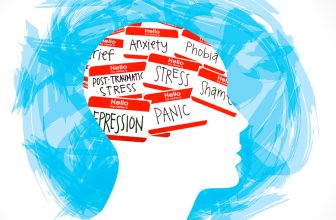Hair health tips : Are you tired of dealing with dry, damaged, or thinning hair? Don’t worry, you’re not alone. Hair health is something that many people struggle with but often overlook in their daily routine. However, taking care of your hair can make a huge difference in how it looks and feels. From understanding the different types of hair to learning about how to improve its overall health and prevent damage, this article will cover everything you need to know about hair care. So sit back, relax and get ready for some valuable tips on achieving luscious locks!
What is hair?
Hair is one of the most defining features of mammals. It’s made up of a protein called keratin, which also forms nails and skin. Hair can vary significantly in texture, shape, and color depending on factors such as ethnicity, genetics, age, and environment.
The structure of hair consists of three layers: the medulla (innermost layer), cortex (middle layer), and cuticle (outermost layer). The medulla contains cells that have been filled with air or pigment to create different shades. The cortex provides strength and elasticity to hair fibers while the cuticle acts as a protective barrier against damage from environmental factors like heat styling tools or pollution.
Hair grows out from follicles located in the scalp or other parts of the body producing new strands through an ongoing cycle known as hair growth phases: anagen phase – where active growth occurs; catagen phase – where follicles shrink leading to cessation; telogen phase – resting stage before shedding occurs.
Overall,hair plays a significant role not just in appearance but also serves important functions such as regulation of body temperature by providing insulation for the head. Understanding your hair type’s unique needs can help you take better care of it over time for healthier-looking locks!
The Different Types of Hair
Hair is a unique feature that defines our personality and style. However, not many people are aware of the different types of hair that exist. Hair varies in texture, thickness, and density from person to person.
Straight hair is smooth and silky with no or little curl pattern present. Wavy hair has loose curls that resemble the shape of an “S”. Curly hair has tighter curls which can vary from ringlets to corkscrew-shaped strands. Coily hair appears tightly coiled with a zig-zag pattern while kinky hair has very tight coils resembling small spirals.
Apart from these four primary categories, there are also multiple subcategories based on factors such as porosity levels, moisture content, and elasticity. Knowing your specific type of hair can help you take better care of it and choose appropriate products for maintenance.
The key takeaway here is that every individual’s hair type is unique, so it requires personalized attention to ensure optimal healthiness.
How hair growth works
Hair growth is a complex process that occurs in hair follicles, small structures within the skin that produce and nourish hair. Hair growth follows a cycle of three phases: anagen, catagen, and telogen.
During the anagen phase, which lasts from two to six years depending on genetics and other factors, hair cells divide rapidly at the base of the follicle. This creates new hair tissue that pushes older hairs out of the follicle and onto your scalp.
In the catagen phase, which lasts only one to two weeks, cell division slows down as blood supply to the follicle decreases. The base of each hair shaft begins to form a bulbous shape as it prepares for shedding.
Finally comes the telogen phase where old hairs fall out naturally or through brushing or styling. New hairs start growing again in their place during another anagen phase.
The rate at which your hair grows depends on various factors such as age, gender, genetics, hormones levels and overall health status. Understanding how this natural process works can help you take better care of your locks by giving them proper nourishment they need!
What can cause hair loss?
Hair loss is a common problem that affects both men and women. It can be caused by a variety of factors, ranging from genetics to lifestyle choices. One of the primary causes of hair loss is genetics. If your family members have experienced hair thinning or balding, it’s likely that you will too.
Another cause of hair loss is hormonal changes in the body. This can occur during pregnancy, menopause or due to certain medical conditions such as thyroid problems or polycystic ovary syndrome (PCOS).
Stress may also contribute to hair loss as it can disrupt the normal growth cycle of our hair follicles and lead to increased shedding. Poor nutrition can also play a role in causing hair loss since our bodies need essential nutrients like protein, vitamins and minerals for healthy hair growth.
Certain medications such as chemotherapy drugs or those used to treat autoimmune disorders may also cause temporary or permanent alopecia.
Over-styling the hair with harsh chemicals and heat tools like straighteners and curlers may damage the strands leading to breakage and eventually thinning out.
How to protect your hair from damage
Protecting your hair from damage is crucial to maintaining its health and longevity. From excessive heat styling to chemical treatments, there are many ways that we can unintentionally cause harm to our precious locks.
One of the easiest ways to protect your hair from damage is by avoiding excessive heat. Using hot tools such as curling irons or straighteners can cause serious damage over time if not used carefully. Try using a lower temperature setting and always use a heat protectant spray for an added layer of protection.
Chemical treatments, such as coloring or perming, can also be harsh on your hair. Opt for more natural alternatives when possible or space out appointments to give your hair time to recover in between treatments.
Another key factor in protecting your hair is proper maintenance. Regularly washing and conditioning with products tailored specifically for your hair type can help keep it healthy and strong. Additionally, avoid brushing or combing too aggressively, especially when wet which is when it’s most vulnerable.
Keeping up with regular trims can prevent split ends from traveling up the shaft of the hair causing further damage. Protecting your strands takes effort but making small changes now will lead you towards healthier looking locks down the line!
How to improve hair health
By following these simple hair health tips, you can effectively improve the overall condition of your hair. Remember to be gentle with your hair and avoid harsh treatments that can damage or weaken it. Eating a balanced diet, staying hydrated, and taking care of your scalp are all essential for healthy hair growth. Additionally, using natural products and practicing proper grooming techniques will go a long way in protecting your locks from further damage. With consistent effort and patience, you’ll begin to notice stronger, shinier, and more manageable tresses in no time!







